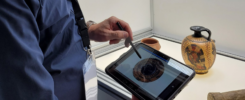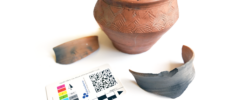During a one-day workshop in Mainz in June 2023, 28 cultural heritage professionals from various Leibniz Research Museums and from the Mainz Notfallverbund were familiarized with the KulturGutRetter response mechanism and tested its modular equipment for the emergency conservation of movable cultural heritage.
by Inga Vollmer-Bardelli
On 30 June 2023, the Leibniz Research Institute for Archaeology (LEIZA) in Mainz hosted a one-day workshop in the framework of the KulturGutRetter project. The workshop simulated individual components of the mechanism, especially the ones concerning the emergency conservation of movable cultural heritage. Experts from the German Archaeological Institute (DAI), the German Federal Agency for Technical Relief (THW) and LEIZA, who jointly develop the KulturGutRetter project, took part in the workshop together with colleagues from various Leibniz Research Museums and from the Mainz Notfallverbund.
Cultural Heritage Experts test the KulturGutRetter Lab
In all, 28 cultural heritage experts participated in the workshop. Among them were restorers specialized in paper, graphic art, natural history material, and archaeological cultural heritage, as well as librarians and one excavation engineer. During the workshop, the participants tested the rescue modules of the mobile emergency lab and the minimum standard procedures (MSPs) that have been developed as part of the KulturGutRetter project. The basic module consists of a lightweight and scalable table system. Movable cultural heritage items can be documented and go through emergency conservation measures at various workstations for photographic documentation, dry and wet cleaning, and packaging.
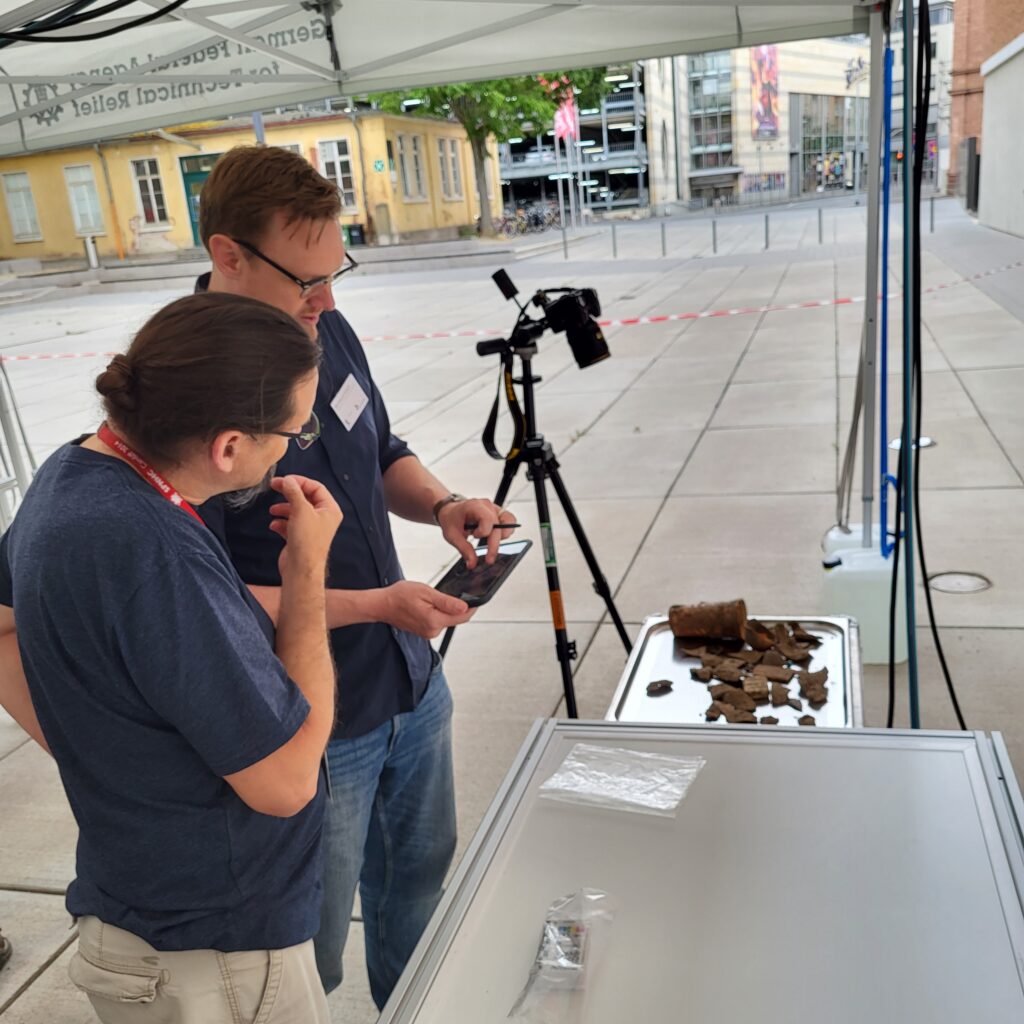
In view of the LEIZA’s archaeological expertise, the mobile lab was set up initially to deal with archaeological cultural heritage. In future it will be adapted for other specialist areas, too. Additionally, the different specialisations beyond archaeological cultural heritage will be incorporated in the MSP as well. It was consequently the primary aim of the KulturGutRetter workshop to include specialist areas outside archaeology that are as diverse as possible, for the purpose of discussing the differing requirements for both the modules and the MSP with reference to a wider range of material groups.
At the start of the event, the participants were introduced to the KulturGutRetter project and the functions of the rescue mechanism. After this, the cultural heritage experts tested the LEIZA-developed modular equipment, following the minimum standard procedures. On the square in front of the new LEIZA building, three THW tents were erected that could theoretically be used in a possible salvage operation. The emergency conservation stations – e.g. photographic documentation, dry and wet cleaning, and packaging – were therefore made ready for testing. Within two hours the cultural heritage experts had performed emergency conservation of contaminated test material, such as ceramic, glass, metal, bone and paper, at the various work stations.
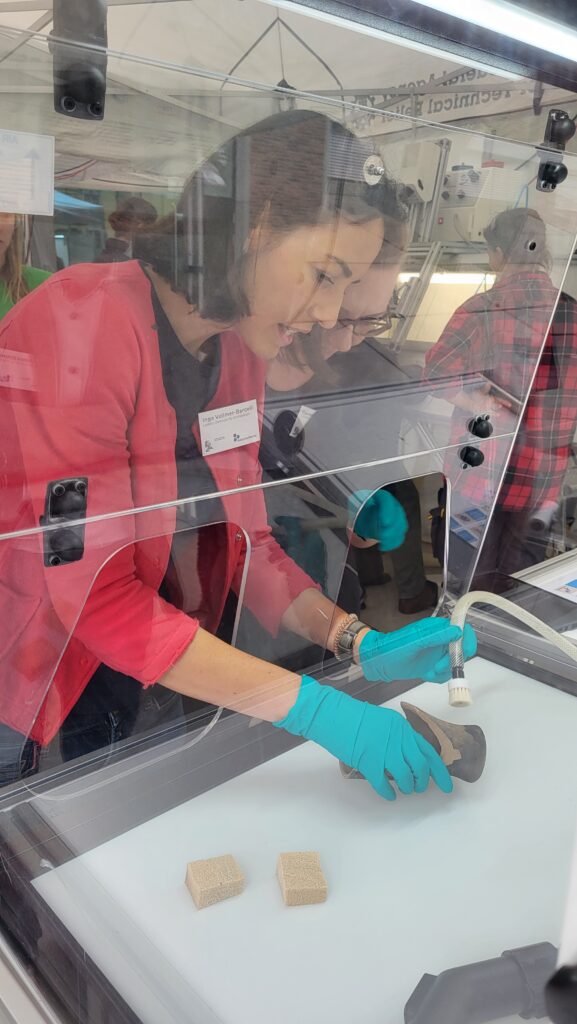
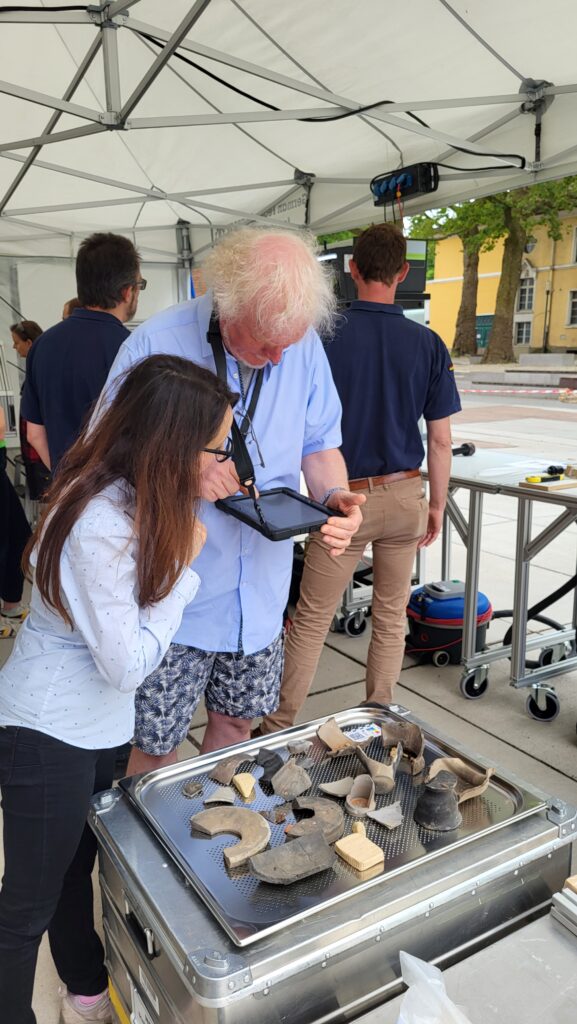
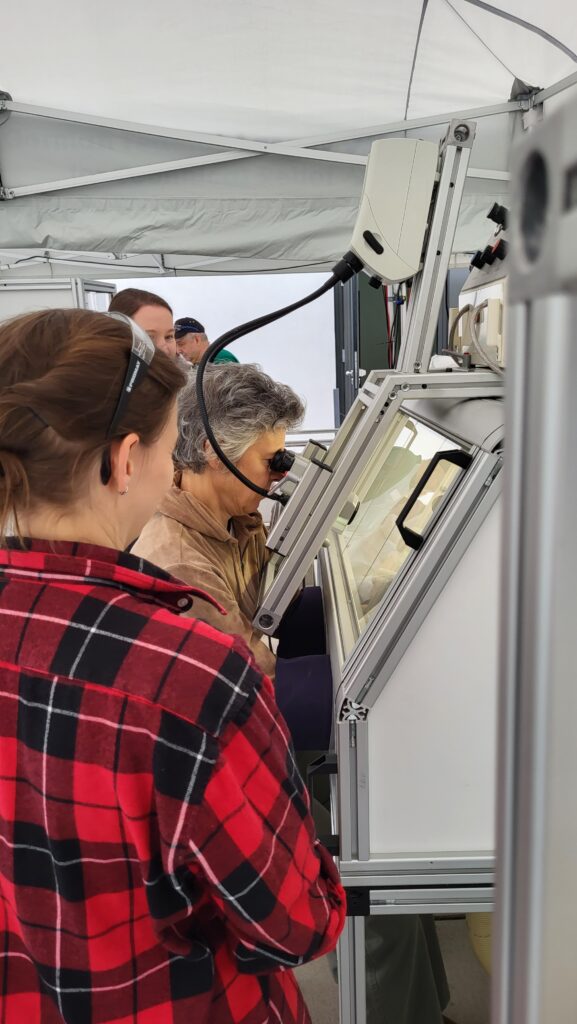
Digital Tools for damage assessment and documentation of cultural heritage
This was not only a matter of getting to know and learning to use the special modules and the workflow – the digital documentation of movable cultural heritage was also tested. This included using the documentation system QField, which the DAI’s IT department has adapted for the damage assessment and documentation of cultural heritage. Using the QField app it is possible to assign an identification number and a corresponding QR code to individual cultural heritage items by means of a specially developed ID card. This ID number remains assigned to the object throughout the salvaging, documentation, cleaning, packaging and eventual dispatch, meaning that the processing status of the cultural heritage item can be ascertained at any time. The ID card is an important documentation tool during the KulturGutRetter emergency conservation process and was tested for the first time on a fairly large scale on this occasion.
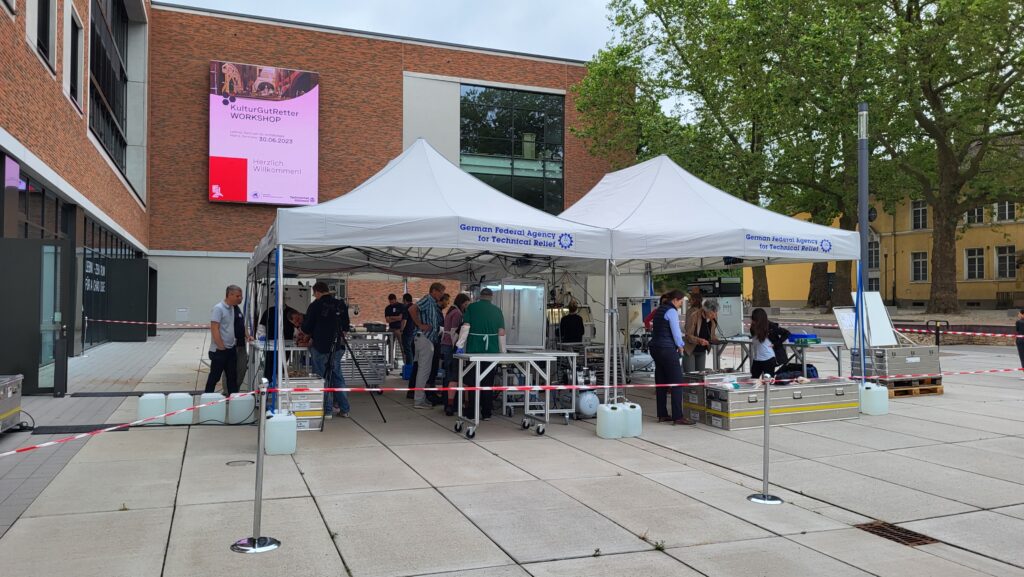
The workshop closed with a feedback session on the exercise. All participants gave a very positive appraisal of the workflows and minimal standard procedures and the user-friendliness of the modules. At the end of the workshop the participants all agreed that it is the condition of the object that is decisive for the success of emergency conservation, irrespective of the type of material.
The KulturGutRetter workshop was an important opportunity for colleagues from the Leibniz Research Museums and the Mainz emergency response association to meet and familiarise themselves with the KulturGutRetter mechanism.
